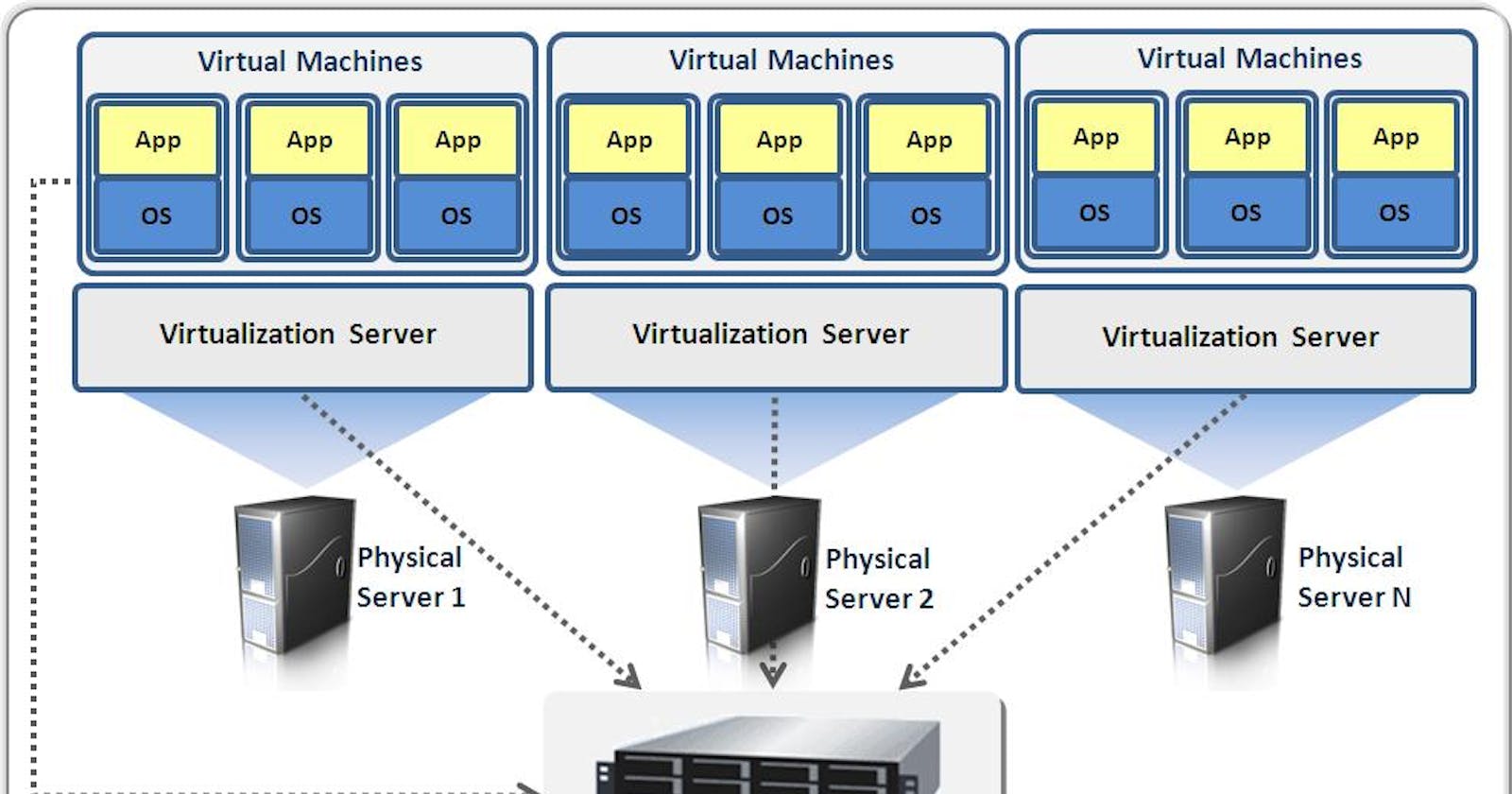WHAT IS VIRTUALIZATION?
Virtualization is a method of abstracting the physical resources of a Computer Hardware system to create virtual instances or representations. It allows multiple virtual machines (VMs) to run on a single physical server, effectively utilizing the available Computing power, storage, and Networking capabilities. By decoupling the Software Design from the underlying hardware, Virtualization. Network enables greater flexibility, scalability, and efficiency in deploying and managing IT resources. Virtualization technology facilitates the creation, deployment, and management of virtual environments, enabling organizations to consolidate their infrastructure, optimize resource utilization, enhance security, and streamline maintenance and operations. It has become a fundamental pillar of modern data centres, cloud computing, and software-defined infrastructure. #Virtualization #ITInfrastructure #CloudComputing
Hardware-assisted VS Full Virtualization.
The difference between hardware-assisted virtualization (also known as hardware virtual machine or HVM) and full virtual machine (FVM) lies in the level of virtualization support and the approach to running guest Operating systems.
Hardware-Assisted Virtualization (HVM):
- HVM relies on the Hardware features of the underlying CPU to provide virtualization support. It allows the execution of unmodified guest Operating Systems, meaning they can run without any modifications or specialized drivers. HVM utilizes technologies like Intel Corporation VT-x or AMD-V to provide direct hardware support for virtualization, including memory management, CPU virtualization, and I/O device virtualization. HVM provides near-native performance for guest operating systems and is commonly used in Hypervisor Labs like VMware ESXi, Xen, and Microsoft Hyper-V.
Full Virtual Machine (FVM):
- Full virtual machines, also known as Software virtual machines, employ a software layer called a hypervisor to provide Virtualization capabilities. The hypervisor.ee runs on the host operating system and emulates the hardware to create virtual machines. The guest operating systems running on FVMs require modification or adaptation to run effectively. The hypervisor intercepts and translates the guest OS instructions to emulate the underlying Hardware, including CPU instructions, memory management, and I/O operations. This process introduces a slight overhead compared to HVM, but it allows for running a broader range of guest operating systems, including those not specifically designed for virtualization
VARIOUS VIRTUALIZATION TECHNOLOGIES :
- Zen: Zen is the virtualization technology developed by AMD. It enables the creation and management of virtual machines (VMs) on AMD processors. Zen-based virtualization is often used in data centers and cloud environments.
2. Nitro: Nitro, Inc. is a virtualization technology developed by Amazon Web Services (AWS) specifically for their cloud infrastructure. It provides dedicated hardware and offloads virtualization tasks from the host CPU to enhance performance and security.
3. KVM (Kernel-based Virtual Machine): KVM is an open-source virtualization technology integrated into the Linux kernel. It turns the Linux kernel into a hypervisor, allowing you to run multiple guest VMs on a single host machine. KVM supports both Linux and Windows guests.
4. ESXi (VMware ESXi): ESXi is a bare-metal hypervisor developed by VMware. It provides a lightweight and secure virtualization platform that allows for efficient resource allocation and management. ESXi is commonly used in enterprise environments.
5. Hyper-V: Hyper-V is Microsoft's virtualization platform available on windows Server operating systems. It enables the creation and management of VMs, providing features like live migration, high availability, and integration with Microsoft's ecosystem.
6. VirtualBox: VirtualBox is an open-source virtualization software developed by Oracle. It runs on various host operating systems and allows you to create and run multiple guest VMs. VirtualBox is commonly used for DESKTOP virtualization and testing environments.
Thanks for our mentor Vimal Daga sir, under LinuxWorld Informatics Pvt Ltd.








